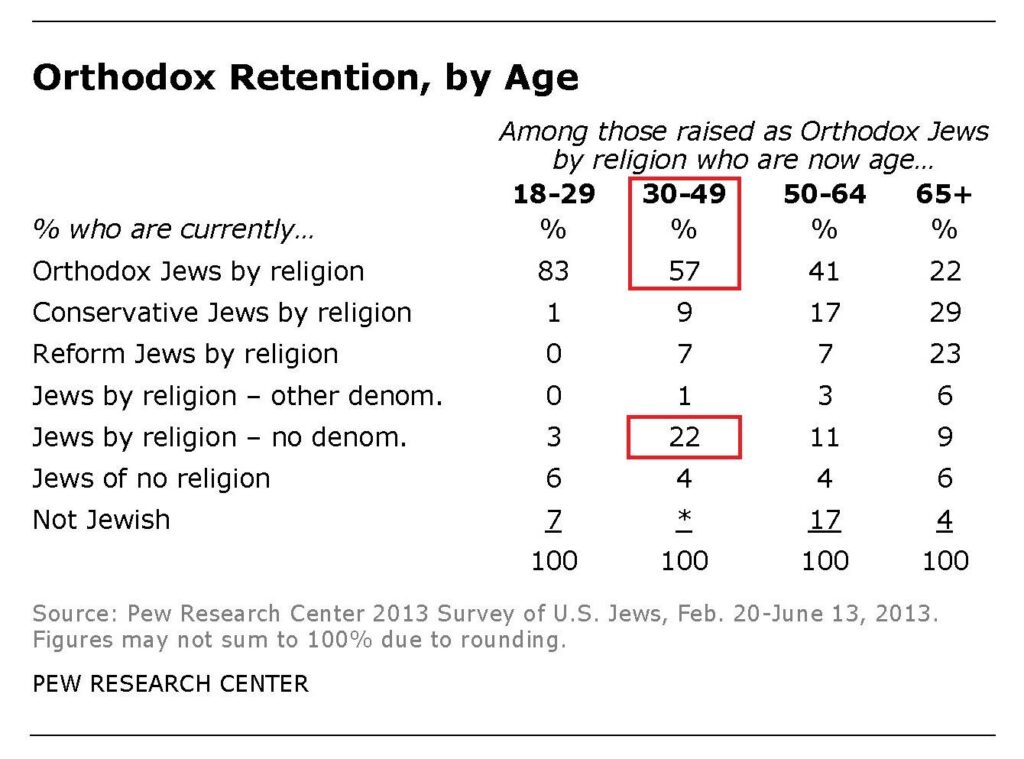When I was 18-24, I probably would have identified as Orthodox, not knowing any better. When I was 25-29, I would have identified as disaffected, having given up on finding a community I would have chosen to live within. I considered Orthodoxy and most other denominational identities that had outlived their historical relevance to be excellent examples of what Kurt Vonnegut termed a Granfaloon. Eventually I discovered a diverse world of interesting people from all sorts of backgrounds, some of whom had found wisdom and insight in Torah that were inspiring their own activism and ethical ways. This happened when I was 30 at a grassroots community without any institutional support, radically pluralistic, called Jews in the Woods. I’m grateful for my learning in yeshivot, especially Yeshivat Hadar, and a perspective, rooted in classic source texts, that yeshivot offered me, not because they helped me at all discover community (they did not), but rather because they empowered me to rely on my own intellect in seeking out those historical figures whose lineage I desired to carry forward. Knowing their thoughts helped to situate my own deeply felt concerns in the larger context of historical, intellectual, and aesthetic movements. Meanwhile, I’d be alone without those living peers and teachers that might help create the change I’d like to see in the world.
A short piece on community identity originally posted on my Facebook page, inspired by a graphic taken from the Pew Survey shared by Itai Hershman on Facebook.

“Community Identification” is shared by Aharon N. Varady with a Creative Commons Attribution-ShareAlike 4.0 International copyleft license.


Leave a Reply